Ducks are interesting creatures with some pretty amazing facts about them. Here are just a few of the most interesting duck facts that you probably never knew!
Ducks are fascinating creatures known for their incredible adaptability to both water and land environments. They are found worldwide, with a wide variety of species each possessing unique characteristics. Ducks are omnivorous, eating a diet consisting of aquatic plants, small fish, insects, and grass. Most ducks have a wide flat beak adapted for dredging. They are also known for their ‘quack’, which is most commonly associated with the female Mallard. Ducks exhibit a wide range of colors and patterns in their plumage.
Key Takeaways on Duck Facts
- Ducks have distinct accents based on their environment, with city ducks having a louder accent than country ducks.
- Ducklings learn to communicate while still in the egg and aim to hatch simultaneously with their siblings.
- Ducks possess superior vision, capable of discerning fine details at farther distances than humans.
- Ducks can move each eye independently, with each eye’s information stored on opposite sides of their brain.
- Ducks can sleep with one eye open to watch out for predators.
- The duckbill, sensitive with many touch receptors, functions similarly to human fingertips and palms.
- A duck’s bill shape varies according to its function. Flat bills help consume plant materials, while pointed bills are for catching and eating fish.
- Ducks can swim in the cold due to their feet’s blood vessels’ closeness, which helps prevent heat loss.
- Ducks exhibit abstract thought capabilities, as ducklings can comprehend relationships between objects.
- Ducks may have a color preference, often favoring the green or blue spectrum.
- Ducks have as many as 12,000 separate muscles to control their feathers, used for various functions like diving, showing emotions, or regulating body heat.
- Female ducks and ducklings use their plain, dark-feathered plumage as a camouflage, especially around the eye area, to protect against predators and aggressive ducks.
- Wood ducks are the only North American waterfowl capable of raising two broods in a year.
- Ducks have been found to ingest gold nuggets while eating stones and gravel for grinding hard foods.
- Some ducks practice nest parasitism, laying eggs in other females’ nests within their species.
- Wood ducks have shown a preference for willow oak acorns.
- Mallard clutches often include eggs fertilized by multiple males, leading to successful fertilization and greater genetic variation.
- Ducks that hatch earlier tend to survive longer.
- Harlequin ducks can nest in challenging environments and feed on invertebrates underwater.
- Long-tailed ducks, also known as oldsquaws, are expert divers, reaching depths of up to 240 feet.
- Ruddy ducks produce the largest eggs relative to their body size, sometimes even outweighing the hen.
- The oldest known duck was a 29-year-old canvasback.
- Ducks can fly at altitudes ranging from 200 to 4,000 feet, reaching up to 21,000 feet when needed.
- The fastest duck recorded was a red-breasted merganser, achieving an airspeed of 100 mph.
- The Labrador duck, the only known extinct North American waterfowl species, disappeared in 1875.
- Ducks have been observed to gather in large numbers in fissures on ice.
- Some duck species can be carried across continents by strong winds.
- Severe weather can trigger a mass migration of ducks, known as a “grand passage.”
- There have been instances of ducks “raining” from the sky, often due to being killed or affected by hail.
- Ducks in the wild can crossbreed, with mallards known to crossbreed with as many as 40 other waterfowl species, and wood ducks with up to 20 other species.
Ducks can sleep with one eye open.
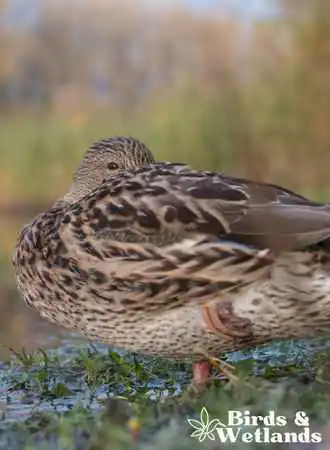
Ducks and other birds have a remarkable ability to sleep with one eye open while half their brain is asleep. A bird’s body remains mostly motionless, and its brain function decreases by up to 50% during single-hemisphere sleep, which occurs when one hemisphere of the brain is completely asleep, and the other is awake. This ability allows ducks and other birds to remain alert while getting the rest they require.
Some duck species can dive underwater.
Some ducks, also known as diving ducks or sea ducks, can dive underwater and stay submerged for extended periods. This ability evolved to allow ducks to feed on a variety of prey, including insects, grubs, and small fish, with relative ease.
Some duck species can dive more than 240 feet below the water’s surface, far exceeding the capabilities of most birds.
While diving underwater requires physical strength and agility to navigate the water, ducks appear well-equipped for this task due to their unique anatomical features. Due to the proximity of blood vessels in their feet, ducks can swim in cold water without becoming chilled. This also allows warm blood from the body to the feet to warm the cooler blood from the feet to the body.
Some female ducks choose male ducks as potential mates based on the males’ dancing abilities.
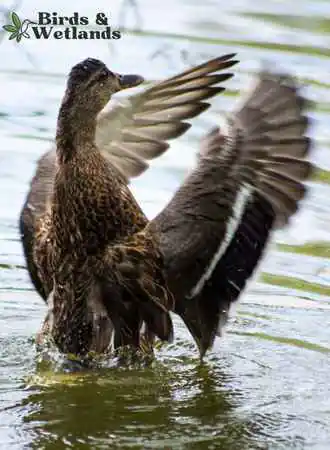
Female ducks are picky when it comes to finding a mate. They are known to pay close attention to potential partners’ behaviors and appearances before deciding who they want to spend their lives with. The ability to dance is one of the most important factors influencing this decision.
Male ducks put on elaborate displays to impress their potential mate as soon as mating season begins. These feats of speed and coordination may include intricate footwork and fancy flapping.
Furthermore, many female ducks consider attractive and colorful plumage an important factor in choosing a mate, so males will frequently have brightly colored feathers or distinctive markings that they can show off while dancing.
Only one lucky male duck is chosen in the end, but the others continue to try year after year to impress their dream partner with their flashy moves and dazzling plumage.
Common duck terminologies
A male duck is called a drake, a female duck a hen and a baby duck a duckling.
Domestic ducks are closely related and share a common ancestor. All domestic ducks, including Pekin, Aylesbury, and Rouen breeds, can be traced back to the Mallard (also called wild duck) or the Muscovy duck. These two waterfowl species are found worldwide and represent some of the most ancient lineages in the duck family. But the Mallard is the most common species of duck.
Most duck species can outlive dogs and cats.

Desi, a female mallard duck, was the oldest duck on record. Desi was 20 years old when she died and lived in the United Kingdom. Her longevity is remarkable, given that the average lifespan of a duck is only 3-5 years. However, it is believed that Desi’s excellent diet and high quality of care contributed to her long and healthy life.
It should be noted that how long ducks live depends on a lot of factors such as diet, habitat and predation.
Ducks are better egg layers than chickens.
There is no doubt that ducks produce eggs efficiently. While some chicken breeds may lay eggs all year, most will only lay during spring and summer.
In contrast, many duck breeds begin laying eggs in the spring and continue to do so throughout the autumn and winter. Even if natural daylight dims or temperatures drop during this period, ducks are less sensitive to environmental factors than chickens and, thus, tend to maintain their normal production levels.
Furthermore, ducks will frequently continue to lay well into old age, allowing them to lay more eggs over a longer time than chickens.
Duck eggs are better than chicken eggs.
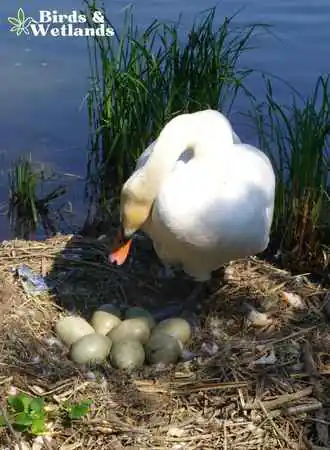
Duck eggs are a highly prized nutrition source that has numerous advantages over chicken eggs. Their deep yellow yolks indicate that they contain significantly more antioxidants, omega-3 fatty acids, and vitamin A than chicken eggs. Duck eggs have a higher protein content than chicken eggs when size is considered. In short, duck eggs are an excellent nutritional choice for anyone looking to improve their health and well-being.
A mother duck will continue to look after a duckling even after you touch it.
When it comes to raising ducklings, mothers tend to be fiercely protective of their young. Contrary to popular belief, human interference with a mother duck and her hatchlings can cause her to abandon her offspring altogether. However, there is some evidence that this isn’t always the case. Research has shown that even if a human touches a duckling for seemingly no reason, the mother will often continue caring for it as usual.
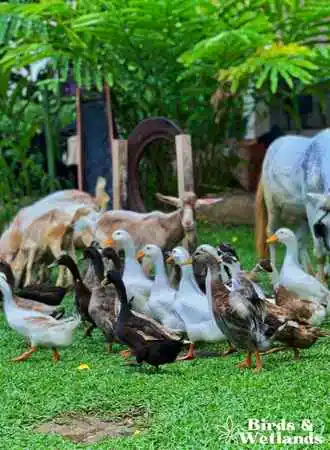
Ducks are known to be social animals. They are at ease in large groups of other ducks and prefer to spend time with others rather than alone. Most ducks are at ease when they are in the company of other ducks and enjoy the bustle and noise of communal activity.
Ducks are also highly intelligent animals that enjoy playing games, interacting with one another, and exploring their surroundings. They are naturally curious and drawn to new objects or situations, making them natural problem solvers and quick learners.
Some ducks dunk their heads underwater.
Dabbling ducks are well-adapted to survive in various environments because they can feed in multiple ways. They are distinguished by their feeding habits, depending on the environment and duck species.
Many dabbling ducks feed primarily on the surface of shallow water, whether by picking insects or aquatic plants from the surface or by grazing along shorelines.
Some dabbling ducks, such as mallards and pintails, can also feed on land, while others will dunk their heads underwater to get more food in deeper waters.
Not all ducks fly.
Many people assume that all ducks can fly, but that can’t be any further than the truth. One thing that separates wild ducks from domesticated ones is the ability to fly.
Generally, most species of wild ducks that migrate during the winter are much better flyers than those raised in captivity for food or egg production. These migratory birds must travel hundreds or thousands of miles yearly to reach their breeding grounds. As a result, these ducks have evolved to become some of the best fliers on the planet, with strong wings and muscles designed specifically for long-distance travel.
On the other hand, most domesticated pet ducks cannot fly due to their body weight and loss of flight ability over generations of selective breeding.
Baby ducks are precocial.
Baby ducks are precocial animals, which means they can care for themselves right after birth. Other young animals, such as chicks and other bird species, are considered altricial because they rely on their parents for food, warmth, and safety.
Baby ducks have fully developed eyesight at birth, unlike altricial ducklings, born blind and featherless. They also have a soft layer of down on their bodies, which helps to regulate their body temperature and keep them warm from the moment they hatch from their eggs.
Unlike altricial chicks, which rely on their mothers to feed them by scooping up worms or small insects with their broad beaks or bills, precocial ducklings can forage for food on their own from an early age with the assistance of their mothers.
Ducks constantly preen to have highly waterproof feathers.
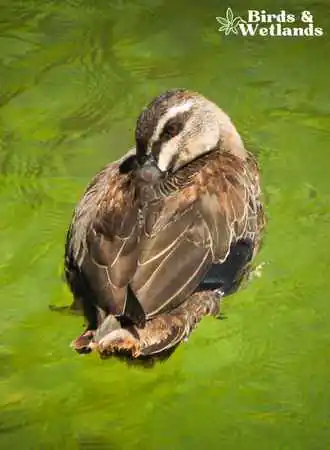
Preening is when ducks gather an oil produced by a special gland called the preen gland located near their trials. Ducks spread this special oil using their bills to waterproof their feathers. Preening also helps groom and keep ducks clean by removing dirt, debris, and parasites. Preening is, therefore, essential for maintaining a healthy coat of feathers in your feathered friends, allowing them to remain warm, dry, and protected from the elements.
Ducks use their webbed feet to dive deep underwater to grab fish.
Ducks such as the red-breasted merganser are well-known for their ability to swim. While some birds rely on their wings for swimming, most ducks use their webbed feet to propel themselves through the water.
Mallards tend to crossbreed with many species of ducks.
In the wild, most bird species engage in crossbreeding. For ducks, Mallards commonly crossbreed with other waterfowl species of duck.
Ducks are capable of abstract thinking.
Mallard ducklings not only record sensory information, like color, sound, or smell but also abstract information, like whether two objects are the same or different from each other.
Male ducks are more colorful than female ducks.
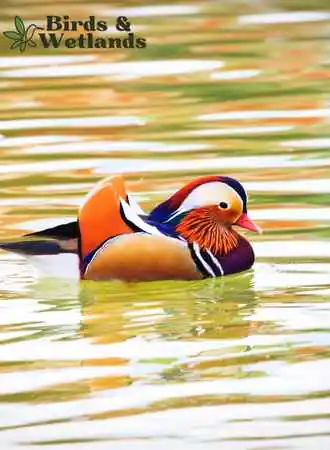
Males have colorful feathers which they use to attract females. However, they will lose these feathers along with the ability to fly albeit temporarily during the process called molting. Fortunately, they will regain this same colorful plumage when they molt again.
Interestingly, white ducks will remain white for the rest of their lives while non-white ducks will slowly gain white patches of feathers in their bodies and grey wings.
Ducks’ eyes have exceptional vision.
Not only can ducks see fine detail at significantly greater distances than humans, but their visual field is twice as large as ours. They can perceive distant objects with a clarity that is 2.5 to 3 times greater than ours. Ducks have three eyelids and four-dimensional color vision, allowing them to detect even the most minute environmental details.

